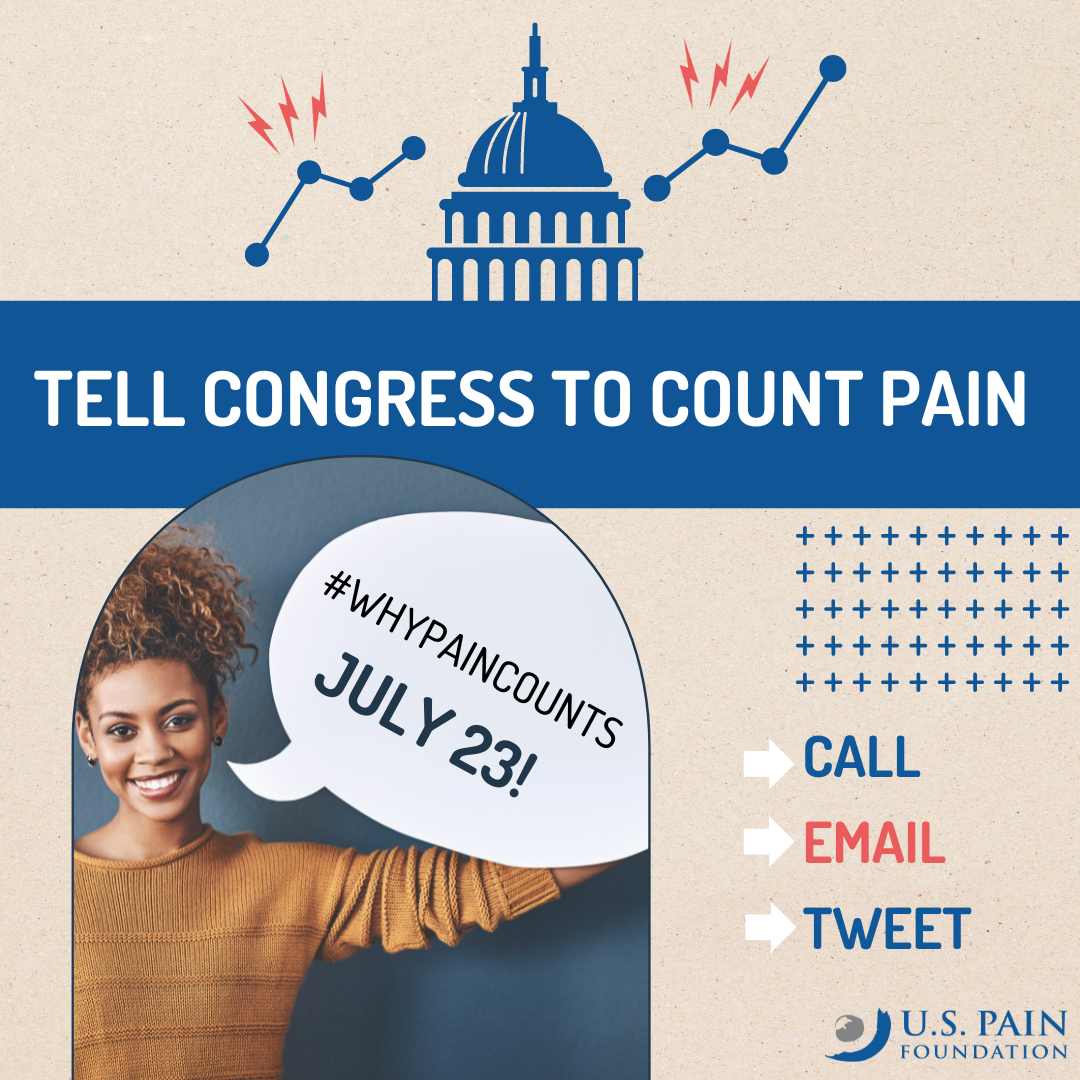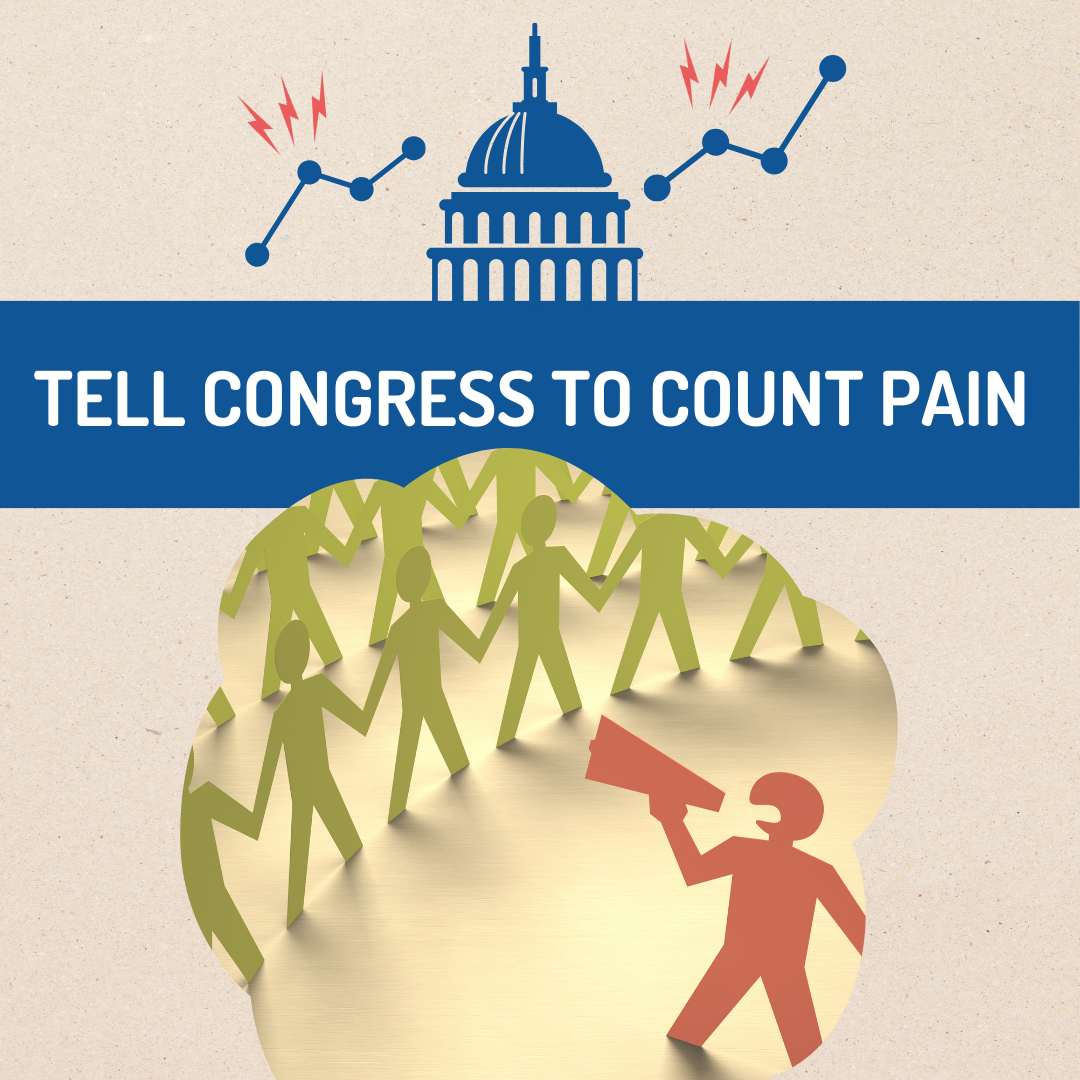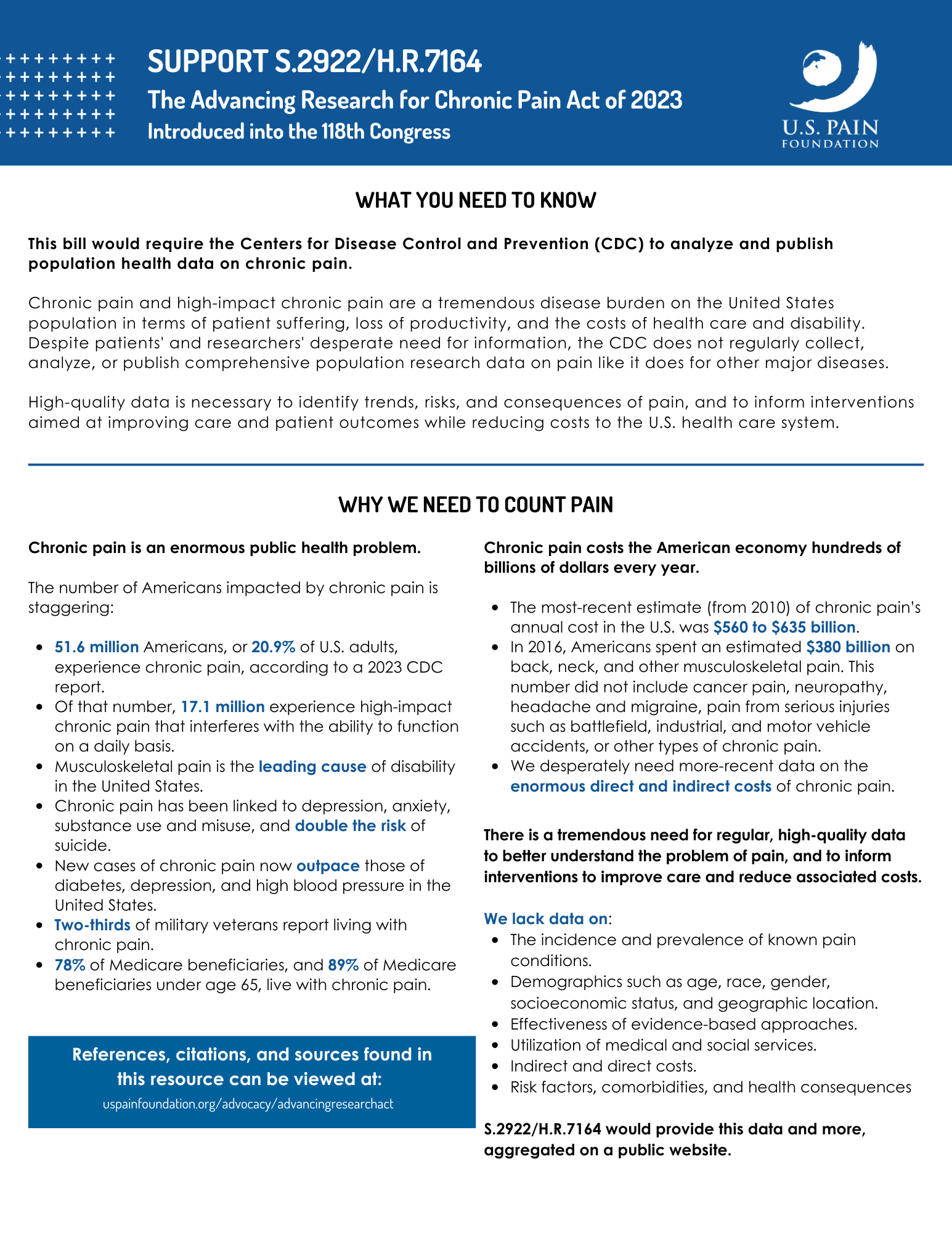VIRTUAL ADVOCACY DAY
JULY 23, 2024
Chronic pain is an enormous public health problem. How can we make sure we have appropriate data on the incidence and prevalence of pain conditions, demographics, risk factors, comorbidities, indirect and direct costs, and more?
We can make sure Congress counts pain.
Tell Congress To Count Pain
The Advancing Research for Chronic Pain Act, S.2922/H.R.7164, is one of only a handful of bills ever introduced in Congress for people with pain.
This bill would facilitate the creation of a public website sharing aggregated and updated comprehensive population health data on chronic pain.
Our ask is twofold:
1. Request that the Senate hold a full vote on the SUPPORT Act reauthorization, which includes this bill.
2. Request that members of the House of Representatives co-sponsor H.R.7164, the Advancing Research for Chronic Pain Act.
EMAIL.
Legislators start paying attention when they receive enough emails about the same subject. We are making it easy to contact them through a template email campaign.
CALL.
Even if you only leave a message or speak with an aide, calling is the most effective way to get policymakers’ attention. We’ve included step-by-step instructions and talking points.
More ways to help
- Share or retweet a post from U.S. Pain Foundation today on Facebook, Instagram, and X.
- Ask friends and family members to participate.
- Fill out our Action Center form to get more involved in advocacy and stay up-to-date on future efforts.
- Use #WhyPainCounts and #TellCongressToCountPain in all your social media posts.
- Download one of our graphics below and share why this campaign matters to you on social media. (Remember to use our hashtags, #WhyPainCounts and #TellCongressToCountPain, in your post.)
Why does it matter and what do we need?
Let’s take a quick look at why pain care is a significant public health issue in the United States:
- 51.6 million Americans, or 20.9% of U.S. adults, experience chronic pain.
- 17.1 million Americans experience high-impact chronic pain.
- New U.S. cases of chronic pain now outpace those of diabetes, depression, and high blood pressure.
- Two-thirds of military veterans live with chronic pain.
- 78% of Medicare beneficiaries, and 89% of Medicare beneficiaries under age 65, have chronic pain.
We need consistent, high-quality data to gain a better understanding of the public health problem of pain, and to guide efforts to improve care and reduce related expenses. Currently, we lack data on the following related to chronic pain:
- Frequency and occurrence of pain conditions
- Demographic information such as age, race, gender, socioeconomic status, and geographic location
- Effectiveness of evidence-based approaches
- Utilization of medical and social services
- Both direct and indirect costs
- Risk factors, coexisting conditions, and health outcomes





